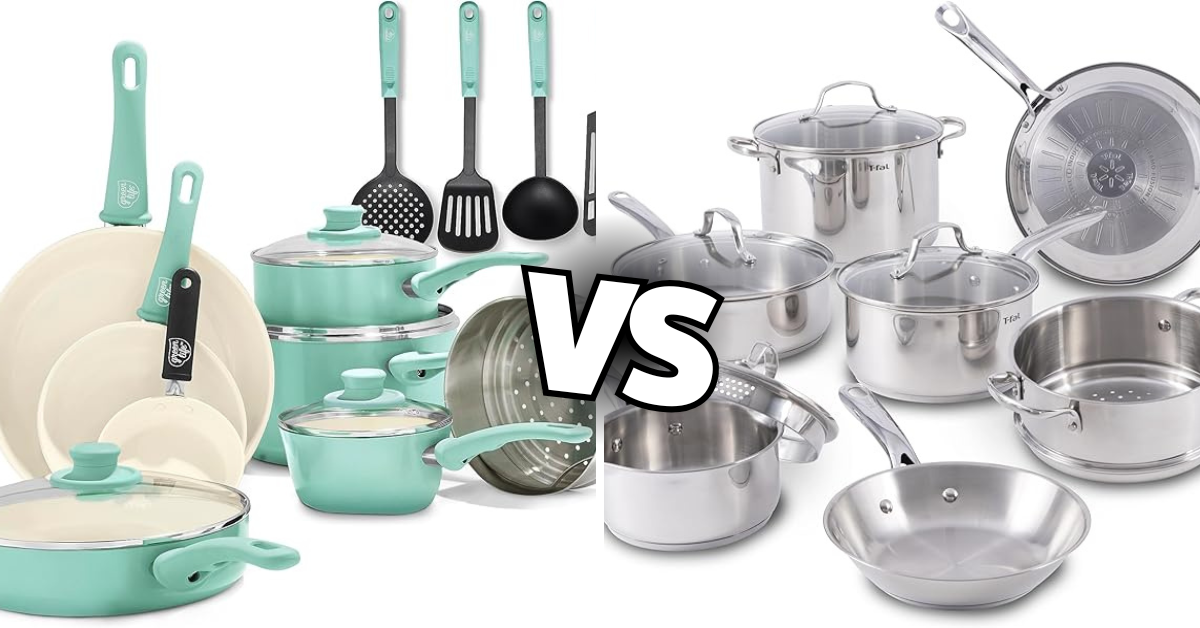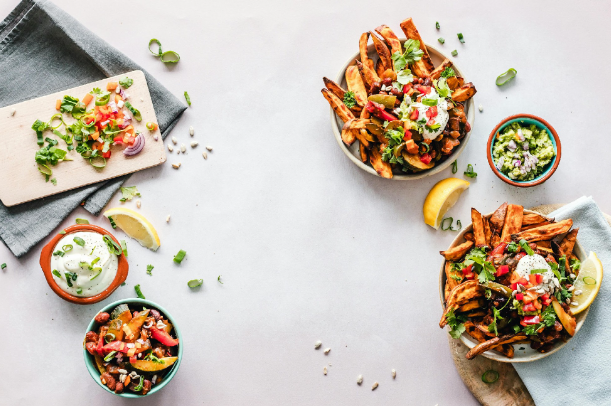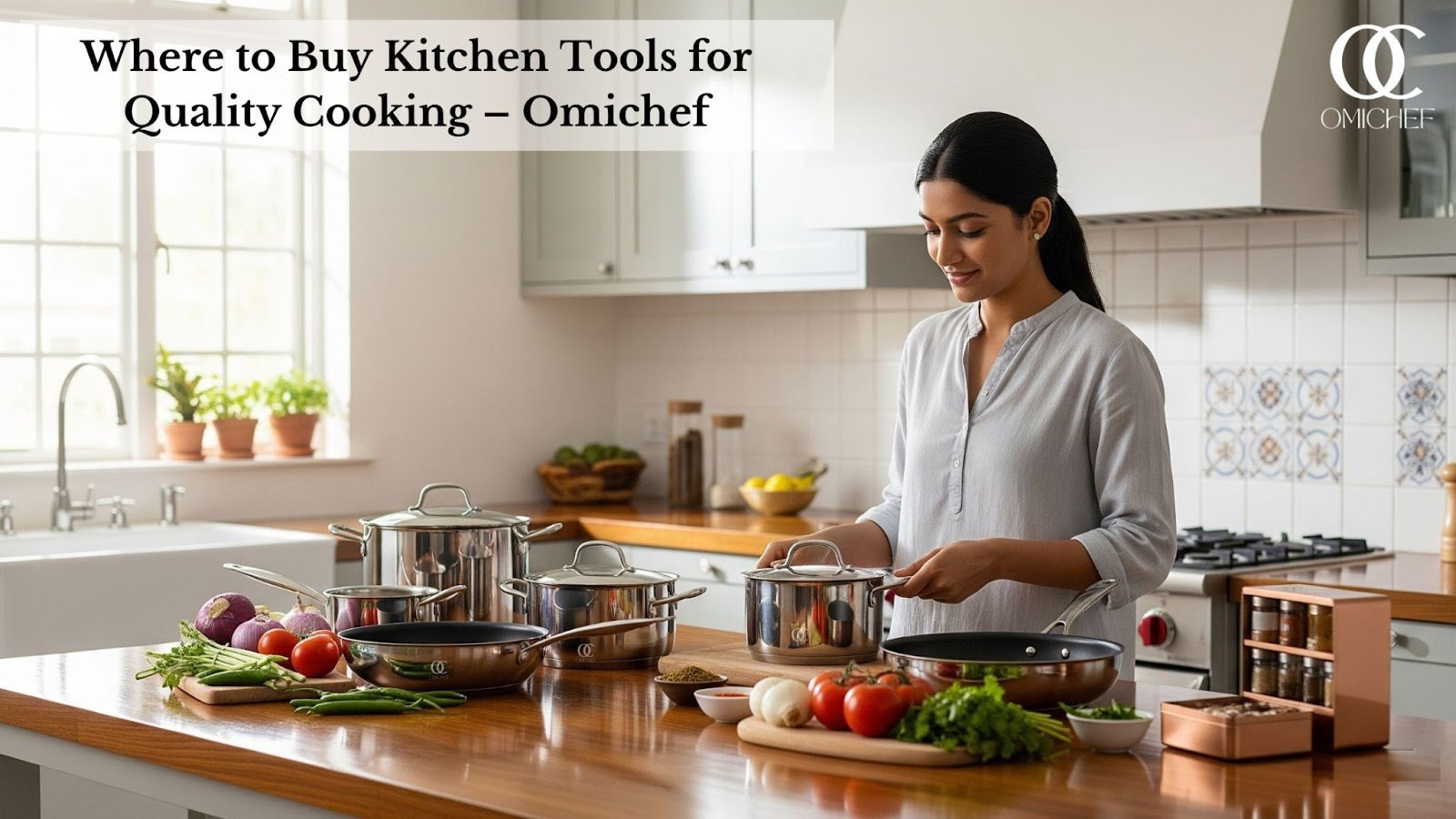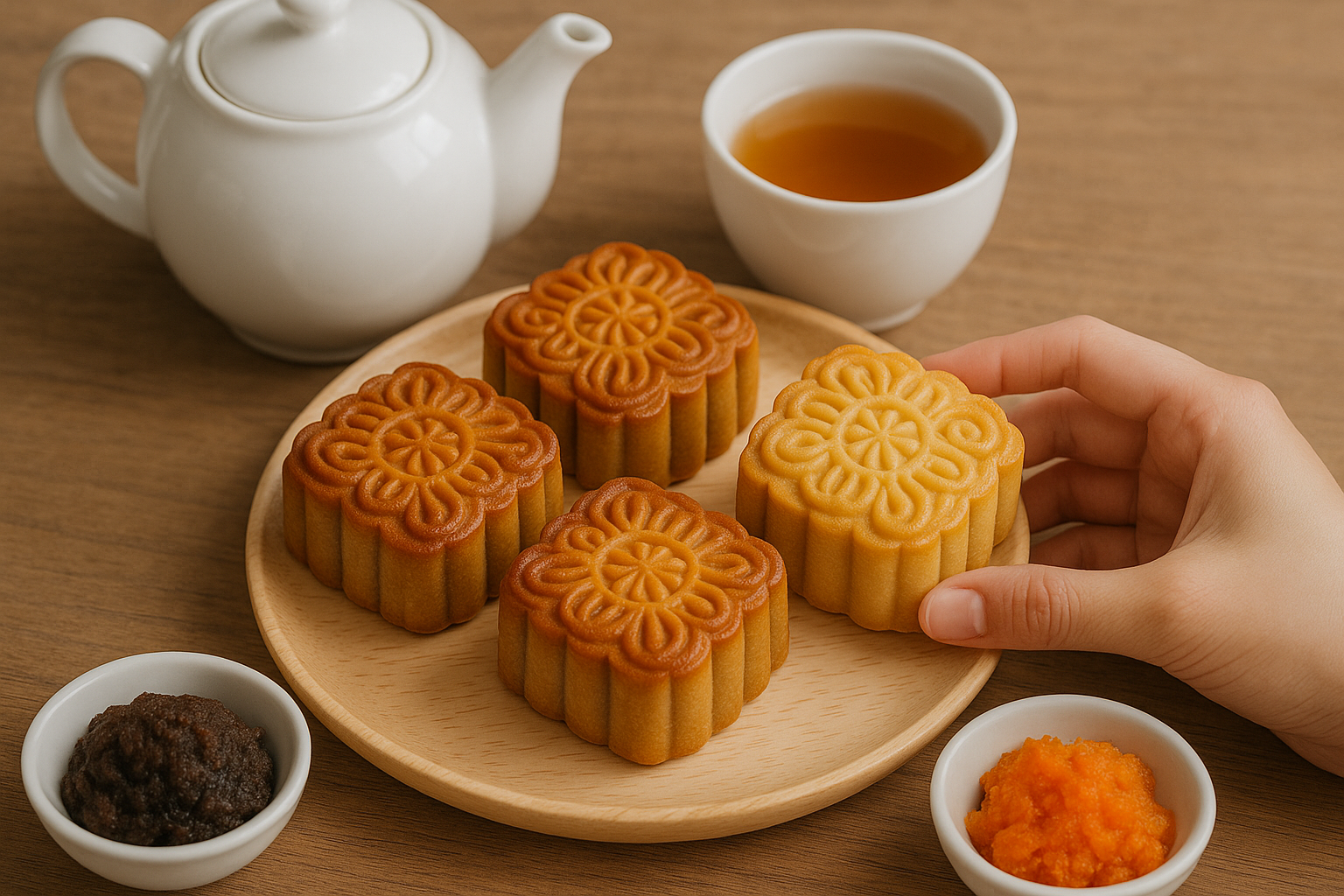- Ceramic cookware is non-stick, easy to clean, and ideal for low-to-medium heat cooking but has a shorter lifespan.
- Stainless steel cookware is very durable. It holds heat well and is good for high-temperature cooking. But, it needs oil to stop food from sticking.
Let’s dive into the pros, cons, and major differences between these two popular cookware options.
Ceramic vs stainless steel cookware: Which Is Better?

| Feature | Stainless Steel | Ceramic Cookware |
|---|---|---|
| Durability | Lasts a lifetime | 2–5 years lifespan |
| Heat Conductivity | Excellent with multi-ply | Quick but uneven heating |
| Non-Stick | No (requires seasoning) | Yes (natural non-stick) |
| Maintenance | Dishwasher-safe | Hand-wash recommended |
| Safety | May leach metals (low quality) | Free from harmful chemicals |
| Cost | Expensive but long-lasting | Affordable but requires replacement |
1. Material Composition and Structure
- Stainless Steel: This strong material is a mix of iron, carbon, chromium, and nickel. It’s very durable and doesn’t rust or corrode easily. High-quality stainless steel cookware usually has an aluminum or copper core. This core improves heat distribution.
- Ceramic: Modern ceramic cookware differs from traditional types. It has a silicon-based, non-stick coating on a metal core, usually aluminium. This provides easy food release and a chemical-free cooking surface.
2. Heat Conductivity and Cooking Performance
- Stainless Steel: It holds and spreads heat well, which makes it great for high-heat cooking methods such as searing, browning, and sautéing. But, food may stick if the pan isn’t properly preheated or greased.
- Ceramic: Great for low to medium-heat cooking, ceramic cookware heats up quickly. But, it does not keep heat as well as stainless steel. It excels at cooking delicate foods like eggs and fish.
3. Durability and Longevity
- Stainless Steel: Highly durable, resistant to scratches, dents, and corrosion. With proper care, a high-quality stainless steel pan can last a lifetime.
- Ceramic: Ceramic cookware is non-stick, but the coating can wear off. It usually lasts 2–5 years before you need to replace it. Scratching and chipping are common concerns.
4. Non-Stick Properties and Cooking Convenience
- Stainless Steel: Not naturally non-stick but can be seasoned or used with oil to reduce sticking. Ideal for professional-style cooking.
- Ceramic: Features a naturally non-stick surface, making it easy to cook without excessive oil. Great for health-conscious cooking and easy cleanup.
5. Safety and Toxicity
- Stainless Steel: Generally safe, but low-quality stainless steel may leach nickel and chromium into food. Opt for high-grade stainless steel (18/10 or 18/8) to minimize this risk.
- Ceramic: Free from PTFE, PFOA, and other harmful chemicals found in traditional non-stick cookware. But, low-quality ceramic coatings may contain undisclosed chemicals.
6. Maintenance and Cleaning
- Stainless Steel: Dishwasher-safe and resistant to harsh detergents. But, stubborn stains may must scrubbing with baking soda or vinegar.
- Ceramic: Requires gentle hand washing to preserve the non-stick coating. Avoid metal utensils and harsh scrubbing to prevent damage.
7. Price and Value for Money
- Stainless Steel: Quality stainless steel cookware costs more at first, but it lasts for decades. A good investment for serious cooks.
- Ceramic: Is usually cheaper, but it doesn’t last as long. This leads to more replacements, which can make it less cost-effective in the long run.
Which One Should You Choose Cookware?
Choosing between ceramic and stainless steel cookware depends on your cooking style, budget, and what you need in the long run.
Choose Stainless Steel If:
- You want long-lasting, durable cookware.
- You frequently cook at high temperatures.
- You need a versatile pan for searing, sautéing, and oven use.
Choose Ceramic If:
- You prefer non-stick convenience with minimal oil use.
- You cook at lower temperatures and want easy cleanup.
- You need affordable cookware and don’t mind replacing it every few years.
FAQs
1. Is ceramic cookware better than stainless steel?
It depends on your needs. Ceramic works well for non-stick cooking. Stainless steel, on the other hand, is more durable and versatile.
2. Can I use stainless steel utensils on ceramic cookware?
No, use silicone or wooden utensils with ceramic cookware to avoid scratching.
3. Is stainless steel cookware non-stick?
Not naturally, but proper seasoning and oiling can help reduce sticking.
4. How long does ceramic cookware last?
High-quality ceramic cookware lasts 2-5 years, while stainless steel can last a lifetime.
Conclusion: The Best Cookware for Your Kitchen
Both ceramic and stainless steel cookware have their advantages and drawbacks. For long-term durability and high-heat cooking, stainless steel wins. For non-stick ease and healthier cooking, ceramic is the way to go. No matter what you pick, investing in good cookware will improve your cooking and the quality of your meals.







